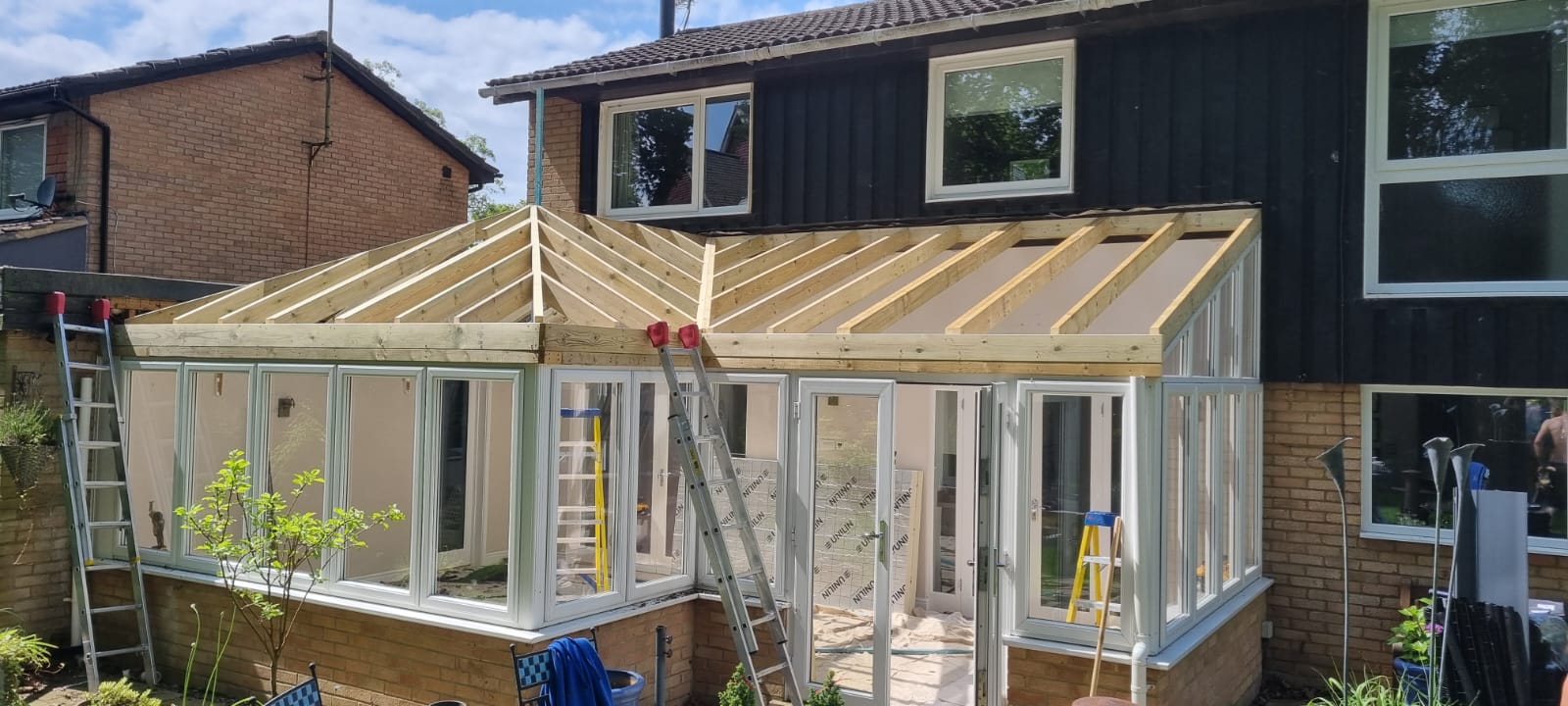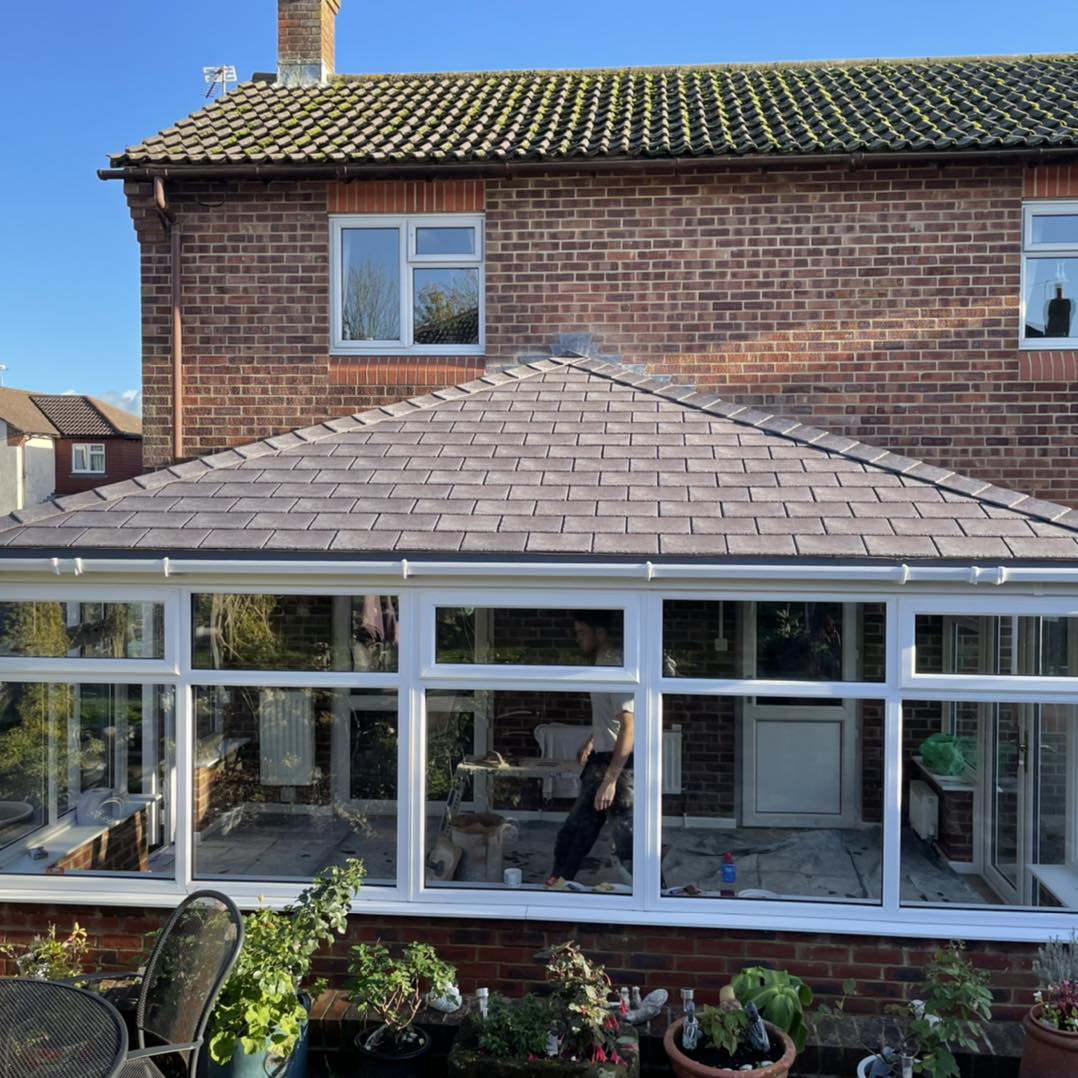The conservatory, a cherished addition to many homes, offers a unique blend of outdoor beauty and indoor comfort. However, the choice of roofing plays a pivotal role in determining its usability across different seasons. Among the various options available, the tiled roof stands out for its aesthetic appeal and potential temperature control benefits.
This introduction leads us to an essential inquiry: Does a tiled roof make a conservatory warmer? This question is particularly significant for homeowners seeking to enhance their conservatory’s year-round usability, balancing the need for natural light with the desire for a cosy, warm space during cooler months. In exploring this topic, we aim to uncover the impact of a tiled conservatory roof on the overall temperature and comfort of these versatile spaces.
Conservatory Roof Types:
Conservatory roofs come in various styles, each with their unique features and benefits. The most common types include glass, polycarbonate, and tiled roofs. Glass roofs offer natural light but can lead to heat loss or gain. Polycarbonate roofs are lightweight but may not provide the best insulation. Tiled roofs, known for their solid construction, offer superior insulation properties.
Tiled roofs are designed to retain heat more effectively than glass or polycarbonate, making them a popular choice for those looking to maintain a warmer conservatory, especially in cooler climates. Their robust design also lends a traditional aesthetic to the conservatory.
Thermal Properties of Tiled Roofs:
Tiled roofs possess superior insulation properties, making them highly effective in maintaining a warmer environment in conservatories. The inherent design of tiles, often made from materials like concrete or slate, provides a dense, compact barrier against heat loss. This density is key in reducing the amount of heat that escapes, especially during colder months.
Additionally, the construction of tiled roofs often includes additional insulation layers, enhancing their ability to retain heat within the conservatory. This combination of material properties and design not only aids in keeping the conservatory warm in winter but also helps in maintaining a cooler temperature during summer by limiting the heat penetration from the outside.
Thus, tiled roofs offer a balanced solution for temperature regulation throughout the year, contributing significantly to a more comfortable and energy-efficient conservatory space.
Comparison with Other Roof Types
Tiled roofs are known for their excellent insulation, making them a popular choice for conservatories in cooler climates. They help maintain a consistent temperature, reducing the need for additional heating in winter. However, they may limit the amount of natural light entering the space.
Glass roofs, on the other hand, offer abundant natural light. They are less effective at insulation compared to tiled roofs, which can lead to higher heating costs in winter and the need for cooling in summer.
Polycarbonate roofs offer less insulation than tiled roofs and provide a reasonable amount of natural light.
Each roof type has its pros and cons in terms of thermal efficiency and light transmission. The choice depends on the homeowner’s preference for natural light, insulation needs, and budget considerations.
5 Additional Factors Affecting Conservatory Temperature:
Besides the type of roof, several other factors significantly influence the temperature in a conservatory.
- Location and Climate: The geographic location of the conservatory affects its exposure to different weather conditions. In colder regions, insulation becomes more crucial, while in warmer areas, ventilation and shading are key.
- Orientation: The direction the conservatory faces impacts how much sun it receives. South-facing conservatories get more sunlight and can become hotter, necessitating good ventilation and shading solutions.
- Ventilation: Proper ventilation is vital for temperature control. Strategically placed vents and windows can help regulate the temperature by allowing hot air to escape and cooler air to circulate.
- Shading: The use of blinds or external shading can significantly reduce heat build-up from direct sunlight, especially in conservatories with glass roofs.
- Glazing: The type of glazing used in the conservatory, be it double or triple-glazed, greatly impacts its thermal efficiency. Higher-quality glazing offers better insulation, reducing heat loss in winter and heat gain in summer.
These factors, in conjunction with the choice of roof, determine the overall thermal efficiency and comfort of a conservatory.
In summary, tiled roofs are highly effective in enhancing the warmth of conservatories, owing to their superior insulation properties. They provide a balanced temperature throughout the year, making them an excellent choice for those looking to improve their conservatory’s energy efficiency.
If you’re considering upgrading or installing a tiled roof for your conservatory, we are here to help.
Contact us for a free quote and expert recommendations tailored to your specific needs, ensuring your conservatory is not only aesthetically pleasing but also a cosy, energy-efficient space for your home.




